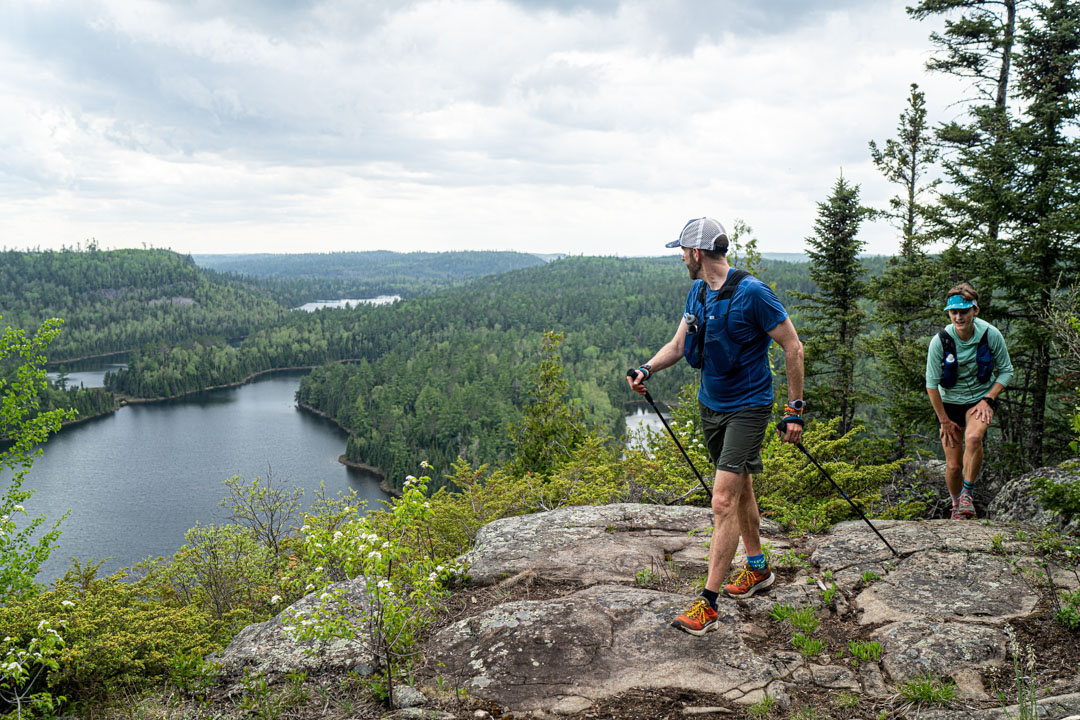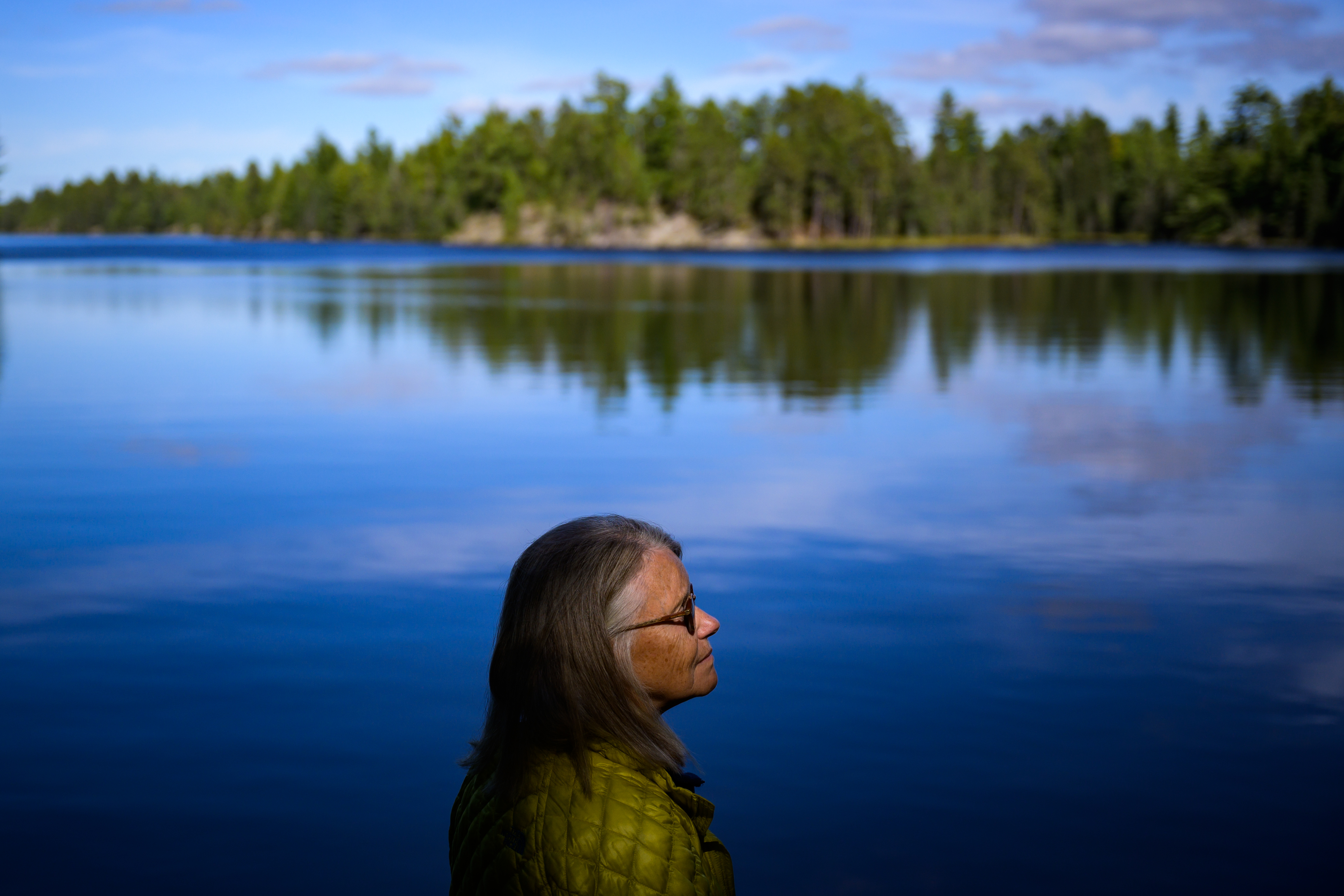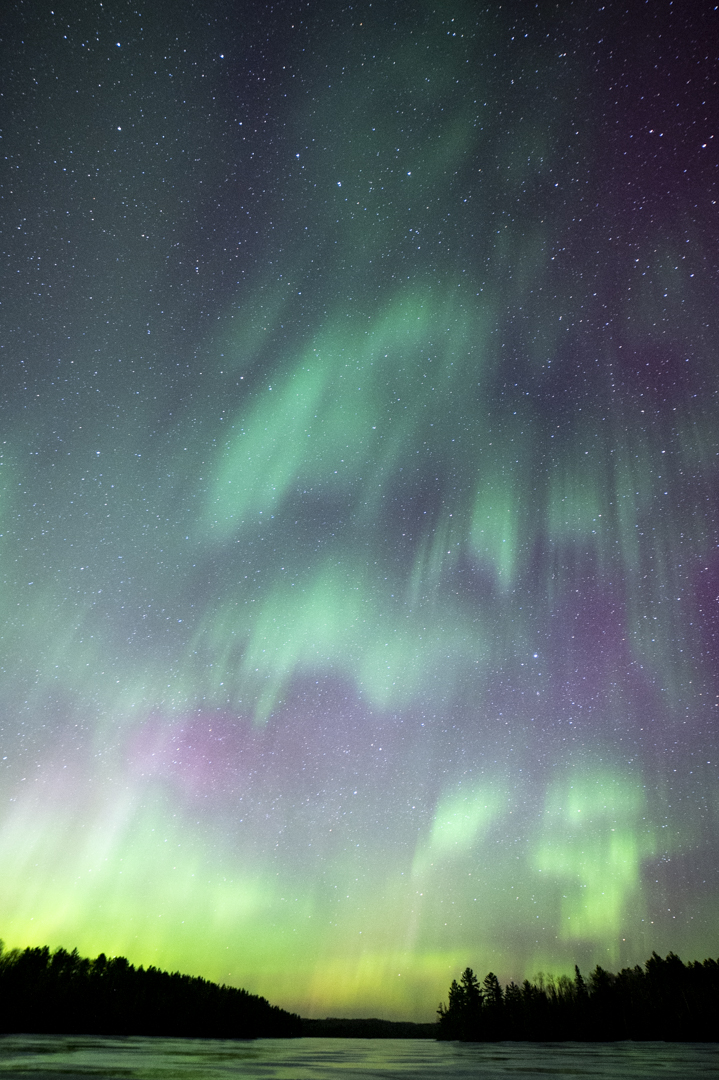For some reason, the WaPo is letting me read this.
Will mining destroy America’s most-visited wilderness?
The Trump administration is moving rapidly to approve a mine next to the Boundary Waters that many fear will pollute the pristine wilderness area.
September 29, 2025 at 6:06 a.m. EDT Today at 6:06 a.m. EDT

Conservation advocate Alex Falconer runs across the Boundary Waters Canoe Area Wilderness to raise awareness for efforts to stop a proposed copper-nickel mine nearby, on May 22, 2021. (Brendan Davis)
By
Jake Spring
ELY, Minn. — Becky Rom has been fighting to protect the famed Boundary Waters Canoe Area Wilderness since she was in middle school. … As the granddaughter of a miner and the daughter of a pioneer in outdoor recreation, the 76-year-old national chair of the advocacy group Save the Boundary Waters has provided a link to a bygone era when the region was a true frontier. As a child, her family even had a pet wolf named Wisini, after one of the Boundary Waters’ iconic lakes.
Now Rom is preparing to let younger activists take over — at a time when the Trump administration is poised to make massive shifts to how public lands are managed. The outcome has implications for the future of mining in long-protected areas across the United States, from Arizona to Alaska.
“What we see now is an administration that is interested in mining everywhere no matter the environmental consequences,” said Justin Pidot, a law professor at the University of Arizona. “They’re moving at a breakneck pace and once mining actually begins, once you break ground, it becomes harder and harder to pull back.”

Becky Rom, an environmental activist and a native of Ely, Minnesota, stands on the bank of Hegman Lake, part of the Boundary Waters Canoe Area Wilderness, in 2019. (Salwan Georges/The Washington Post)
President Donald Trump has taken unprecedented steps to boost mining for copper, nickel and rare earth minerals, while also green-lighting a uranium mine and expanding coal mines. The federal government is prepared to execute a land swap to allow the Resolution Copper mine in Arizona to move forward after being stalled for more than a decade, and House Republicans have approved a 200-mile road through Alaskan wilderness that would allow access to copper and zinc deposits. And the administration has resurrected plans to begin mining a portion of the world’s largest undeveloped copper-nickel deposit on the very doorstep of the Boundary Waters, stating that it plans to reverse a Biden-era ban.
{snip}

Northern lights above the Boundary Waters. (Alex Falconer/Save the Boundary Waters)
{snip}
By
Jake Spring
Jake Spring covers the Environmental Protection Agency, Department of Interior and Congressional energy and environmental policy. Send him secure tips on Signal at jspring.99follow on X@jakespring


